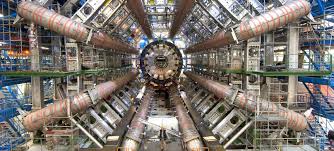The physics programme at CERN presents engineers with varied challenges at the forefront of technology, from the atomic scale to the colossal. Engineers build and test the machines and systems that physicists rely on, and technicians to keep these systems running smoothly, performing repairs and upgrades where necessary.
Building a particle accelerator, for example, can require civil engineering: digging tunnels and installing large infrastructure projects. Other engineers and technicians assemble components: radiofrequency cavities must be crafted to just the right shape and size to boost particles along accelerators; thousands of huge, custom-built electromagnets focus particle beams and guide them around bends in circular accelerators; and the world’s largest cryogenic system cools magnets on the Large Hadron Collider (LHC) to close to absolute zero, so that the wires supplying their electricity can work in a superconducting state, without losing energy to resistance.
Detectors present other engineering challenges. Their components and subsystems are designed, built and tested separately, before they are joined together to work in harmony. Kilometres of wiring and thousands of electrical components make particle detectors a complex feat of engineering.
Engineers are vital to CERN’s activities – to push the boundaries of experimental physics, they’re building some of the most advanced machines in the world.

